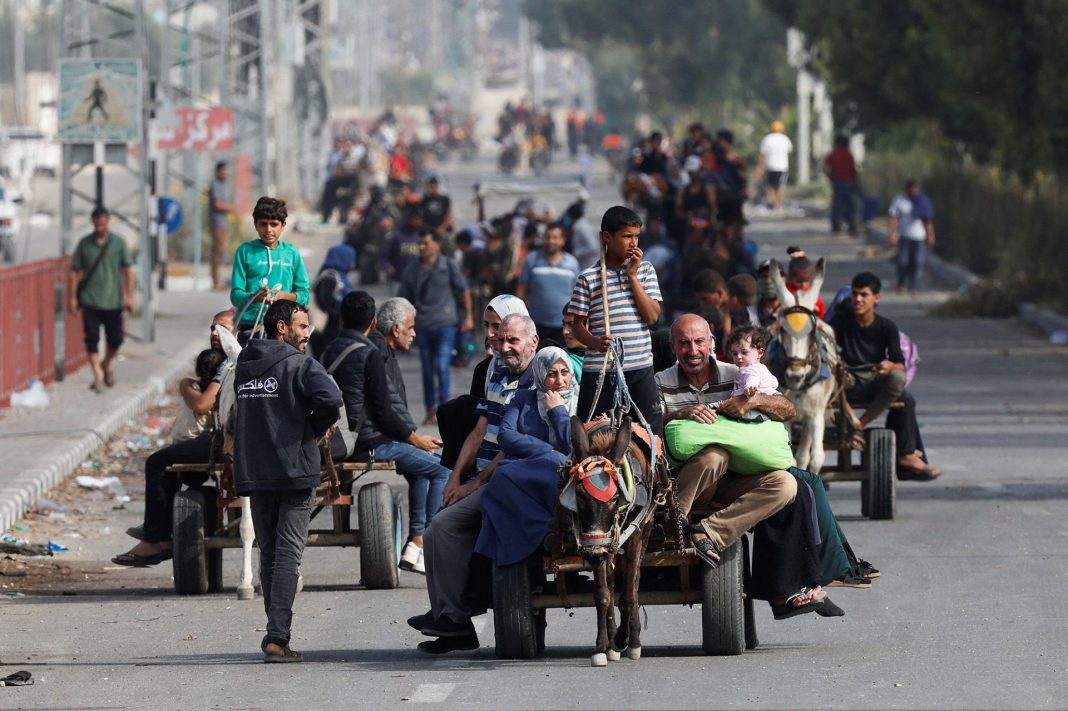“The immediate consequence of the war, not just in physical infrastructure destruction, but also in terms of poverty, livelihoods and loss of livelihoods, is enormous,” Achim Steiner, head of the UN Development Programme (UNDP), said on Tuesday.
The “level of destruction has set back the state of Palestine by years, if not decades, in terms of its development pathway,” Steiner added.
The poverty rate had been 38.8% at the end of 2023, but another 2.61 million Palestinians fell into poverty this year, bringing the total to 4.1 million, according to the new assessment by the UNDP.
Launching a new study on the socioeconomic impacts of the war, Steiner said that even if humanitarian aid is provided each year, the economy will not return to its pre-crisis levels for a decade or more.
“Projections in this new assessment confirm that amid the immediate suffering and horrific loss of life, a serious development crisis is also unfolding – one that jeopardizes the future of Palestinians for generations to come,” he noted.
Recovery will also require support to rebuild destroyed capital and the lifting of “stifling economic conditions”.
The Palestinian economy is now 35% smaller than it was at the start of Israel’s invasion a year ago, while development levels in Gaza itself have collapsed to the level of the 1950s, erasing over 69 years of progress, the UNDP added.
Noguchi Chitose, the deputy special representative of the UNDP’s Program of Assistance to the Palestinian People, stated that by some measures, the region’s poverty level was now approaching 100% as a result of the disruption, with unemployment now at 80%.
“The state of Palestine is experiencing unprecedented levels of setbacks,” Chitose said over a crackling line from Deir Al-Balah.
“For Gaza, reversing development by an estimated 70 years to 1955.”
The study says Israel’s bombing campaign created 42 million tons of rubble in Gaza, creating major health risks. The destruction of solar panels is particularly dangerous given the lead and other heavy metals they release.
Israel’s bombing and ground offensives in Gaza have killed more than 42,500 people, mainly women and children, according to data provided by local health authorities, figures the UN considers reliable.
The war followed Palestinian resistance group Hamas’s attack on Israel on Oct. 7 last year, which resulted in the deaths of around 1,200 people, according to Israeli figures.
“Our assessments serve to sound the alarm over the millions of lives that are being shattered and the decades of development efforts that are being wiped out,” noted United Nations Economic and Social Commission for Western Asia (ESCWA) Executive Secretary Rola Dashti.
“It is high time to end the suffering and bloodshed that have engulfed our region. We must unite to find a lasting solution where all peoples can live in peace, dignity, and reap the benefit of sustainable development, and where international law and justice are finally upheld,” Dashti added.
The UNDP assessment suggested that a comprehensive recovery and reconstruction plan, combining humanitarian aid with strategic investments in recovery and reconstruction along with lifting economic restrictions and promoting recovery-enabling conditions, could help put the Palestinian economy on a restorative track to realign with Palestinian development plans by 2034.
However, this scenario can only play out if recovery efforts are unrestricted.
